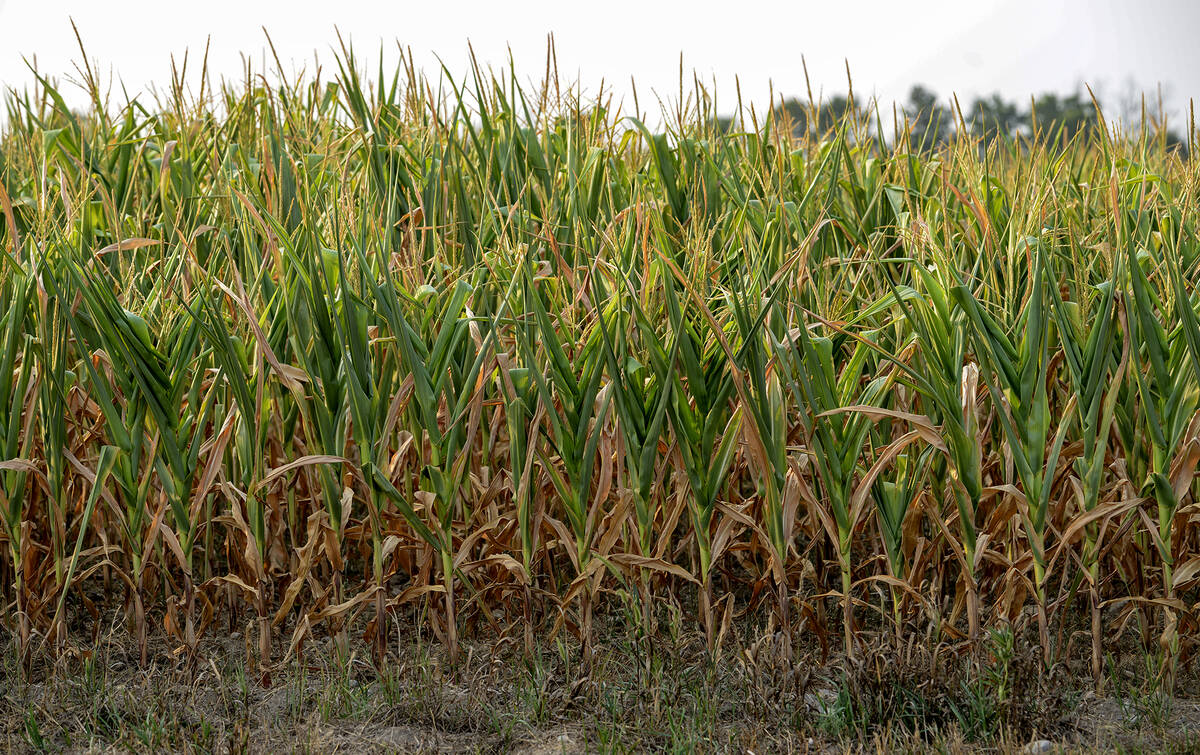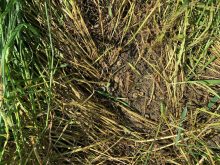Farmers on land that’s variable in soil type, such as southwest of London, are likely already thinking about variable rate fertilizer application.
Darryl Boersma, who farms a large number of acres in Mt. Brydges southwest of London, has been doing variable rate for 17 years.
“This whole area is pretty variable, one of the more variable in the province,” he says. “The land I farm, some of it rented and some of it my own, runs from heavy clay to sandy loam, and I can have quite a bit of variation within the same field. Some of the land I farm is floodplain as well.”
Read Also

Extreme variability marks Ontario’s 2025 corn crop
The yield potential of Ontario’s 2025 corn crop was lost in some areas due to extreme dry conditions.
As well, some of the land he farms had variable rate nutrient applications before he came on the scene and manure had been unevenly applied in various areas.
“Soil sampling was all over the place, with some farms having too much nutrients and some less that you’d want,” Boersma explains. “I started on farms where soil texture and yield was very variable, and expanded, and now every field gets tested every two or three years and, in my case, gets variable rate fertilizer application.”
Boersma advises other farmers to do the same. Start with land where soil type and yield are not consistent and go from there. He gets soil sampling done by a company that can do it in a grid format or topographically by area, such as hill area and depressions in a field.
The company then takes those results, adds in yield goals for the upcoming crop and other data, and the software creates a prescription map for what levels of nitrogen, phosphorus and potassium are needed in various parts of the field, ready to be used in a precision fertilizer applicator. These programs don’t yet take into account which corn hybrid will be planted, to Boersma’s knowledge, and he isn’t sure that will ever be the case.
“I’m sure there’s a difference in how much nutrients different hybrids use, but we’re not there yet,” he says. “But it really takes a lot of data to be able to come up with those sorts of recommendations and also, hybrids change every few years.”
However, Boersma does know a couple of farmers who are doing variable rate application based on previous yield maps and not soil sampling.
“But how accurate that is, I’m not sure,” he says. “There are some trials going on and we’ll see. When you apply based on yield, it might not be a nutrient thing, but moisture retention or another issue.”
Boersma has always had his variable rate fertilizer application done by a custom operator, but this year will be different. He recently invested in his own applicator. He found it through a reputable U.S. online farm auction.
“It was about an eighth of price of a new machine and it’s in perfect condition and the farmer owned it from new,” he reports. “It was everything promised. I’ve actually had offers for twice as much as I paid but I just say ‘Nope. I bought it for a reason.’”
Boersma recommends the use of trustworthy custom operators.
“Ask questions, and find out if these are people who take the time to answer every question and work with you to understand the process,” he says. “Your long-term goals are really important and you want to talk a lot about that, about future plans for a field, what’s gone into that field in the past. And you have to be able to trust that they will keep information about your long-term goals completely confidential.”
So Boersma’s advice for variable rate fertilizing is to do soil tests and work with a trustworthy custom operator. Maybe you won’t save any product in some fields, he says, but you’ll know you’re putting product where you need it.
For his part, Ben Rosser, corn industry program lead at the Ontario Ministry of Agriculture, Food and Rural Affairs (OMAFRA), has no silver bullet recommendations for applying fertilizer at a variable rate to corn. He says that if a farmer’s rate for a particular field is in the ballpark of optimum, there is a cost to variable rate application and if only small changes in input rates are made, “it can be difficult to demonstrate significant benefits.”












